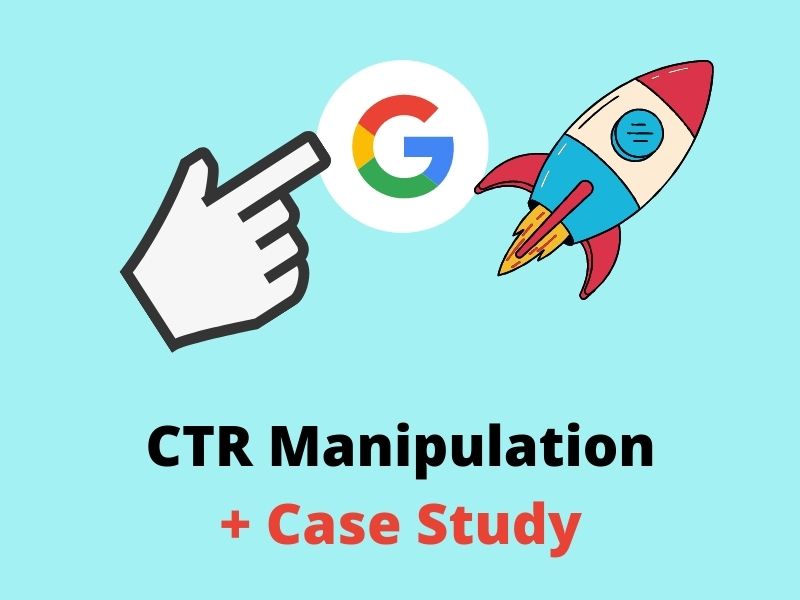GMB CTR Manipulation Insights: Optimize Your Regional Browse Effect
GMB CTR Manipulation Insights: Optimize Your Regional Browse Effect
Blog Article
Strategic CTR Control Solutions: Driving Traffic and Raising Conversions
In the realm of electronic advertising, the critical control of Click-Through Fees (CTR) has arised as an effective tool for driving website traffic and enhancing conversion prices. The intricate procedure of taking care of CTR includes a fragile equilibrium of data evaluation, optimization methods, and a keen understanding of customer habits. By strategically influencing CTR, companies can possibly open new opportunities of development and revenue generation. The intricacies entailed in this practice extend beyond simple clicks on a page. As we explore the diverse elements of Strategic CTR Adjustment Providers, a globe of untapped opportunities and results waits for those that agree to navigate this elaborate landscape.
Benefits of Strategic CTR Control
Tactically controling click-through rates (CTRs) can substantially improve on the internet presence and drive targeted traffic in the direction of wanted conversions. By recognizing and leveraging CTR adjustment strategies efficiently, services can experience a plethora of advantages. One key advantage is the ability to raise the exposure of a web site or specific content across online search engine results web pages (SERPs) Greater CTRs signal to search engines that a specific web link is appropriate and interesting, which can cause boosted natural positions.
In addition, strategically manipulating CTRs can assist organizations attract more competent leads. By maximizing meta titles, summaries, and various other aspects that affect CTRs, companies can tailor their online visibility to reverberate with their target audience. This targeted technique not just drives even more website traffic to the website but likewise boosts the possibility of converting these visitors into customers or customers.
Additionally, an improved CTR can lead to a greater high quality score in on-line ad campaign, thus lowering costs per click and making the most of the return on financial investment. Inevitably, the tactical control of CTRs can function as a powerful tool for improving on-line exposure, attracting the ideal target market, and driving conversions.
Techniques for Boosting Click-Through Rates
Enhancing online visibility and driving targeted web traffic with CTR adjustment demands a deep understanding of reliable techniques for enhancing click-through rates. One key method is crafting compelling ad duplicate that reverberates with the target market. By making use of influential language, highlighting one-of-a-kind selling propositions, and incorporating calls-to-action, you can attract individuals to click your advertisements.
Another critical facet is maximizing advertisement positioning. Placing your advertisements purposefully on online search engine results web pages or websites where your target audience often visits can dramatically affect CTR. A/B testing different positionings and analyzing efficiency metrics can aid recognize the most effective positioning techniques.
Furthermore, leveraging advertisement expansions can enhance the exposure and relevance of your ads, making them extra enticing to individuals (ctr manipulation). Extensions like sitelinks, callouts, and organized fragments provide additional info and chances for users to engage with your ad, eventually boosting the probability of clicks
On a regular basis keeping an eye on and evaluating CTR a fantastic read data is crucial for recognizing trends, understanding individual behavior, and refining your methods to continually enhance click-through rates. By executing these strategies attentively and continuously maximizing your projects, you can drive even more traffic and boost click here for more conversions successfully.
Effect of CTR Adjustment on Conversions

Devices for Monitoring CTR Efficiency
Associating Click-Through Price (CTR) manipulation with conversions emphasizes the need of using efficient tools for checking CTR efficiency in digital marketing projects. One necessary tool for keeping an eye on CTR efficiency is Google Analytics. This platform gives in-depth insights right into individual behavior, consisting of the number of click certain links or advertisements. By tracking CTR in time, online marketers can identify trends and patterns that indicate the effectiveness of their campaigns.
One more beneficial tool is warmth mapping software, such as Hotjar or Crazy Egg. These devices aesthetically represent customer interactions on a web site, highlighting locations where visitors are clicking one of the most. By assessing heat maps, marketing professionals can optimize their sites for far better CTR by placing essential web links or switches in popular places.
Additionally, A/B testing devices like Optimizely or Google Optimize can help marketing experts contrast different description versions of ads or touchdown pages to see which ones generate greater CTR. By continuously monitoring CTR efficiency with these tools, marketing experts can make data-driven decisions to boost campaign effectiveness and drive even more conversions.
Study: Successful CTR Adjustment Methods
Successful execution of CTR adjustment approaches in real-world situations showcases the effect of targeted digital marketing tactics - ctr manipulation. One case study entails a leading shopping business that aimed to enhance traffic and conversions for a brand-new line of product. By tactically manipulating the CTR through maximized advertisement copy and targeted key words, the company observed a substantial increase in click-through rates, leading to a 25% rise in site traffic and a 15% surge in conversion prices within the first month of implementation
In an additional situation, a start-up in the software program market utilized CTR control services to boost its on the internet presence and draw in potential customers. Through A/B screening of ad creatives and leveraging rival analysis to fine-tune their strategy, the start-up achieved a 30% boost in CTR and a 20% growth in sign-ups for their software program test.

Final Thought
Finally, calculated CTR manipulation solutions play an essential duty in driving web traffic and raising conversions for companies. By applying methods to boost click-through rates and keeping an eye on efficiency efficiently, firms can attain greater levels of success in their online marketing efforts. The effect of CTR adjustment on conversions is significant, as confirmed by effective study that show the effectiveness of these techniques in attaining organization goals.
Report this page